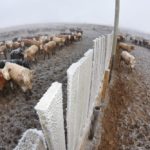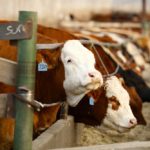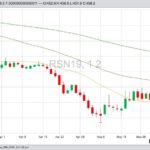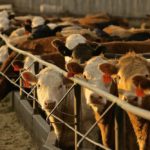Reading Time: 2 minutes Compared to last week, western Canadian yearling prices were relatively unchanged; calves appeared to trade $3 lower to as much as $5 higher. Weather conditions have played a larger role in the price structure this fall. Major finishing feedlots continue to focus on preconditioned calves and have left the unweaned or unvaccinated feeders to the […] Read more

Klassen: Challenging weather influencing feeder market

Klassen: Feeder cattle market recovers
Reading Time: 2 minutes Compared to last week, western Canadian yearling markets traded $4-$6 higher on average; some packages in Alberta sold $8 to as much as $10 above week-ago levels. Larger feedlot operations were very aggressive on 750- to 900-pounders. The quality of yearlings is excellent at this time of year. Comments from the front row suggest most […] Read more

Klassen: Feeder cattle markets remain firm
Reading Time: 2 minutes Western Canadian feeder cattle prices were unchanged from seven days earlier. Strong buying interest was noted from finishing feedlots in Alberta. Orders flowed across the prairies keeping prices relatively even. U.S. feeder cattle markets traded $3 to as much as $8 higher in the Northern Plains which also underpinned prices in Saskatchewan and Manitoba. There […] Read more

Klassen: Yearling prices surge
Reading Time: 2 minutes Compared to last week, Western Canadian yearling prices were $3 to as much as $10 higher while calves traded $2 to $5 above week-ago levels. Most auction barns remain in holiday mode; however, order buyers were extremely busy fielding calls for available cattle. This caused the yearling market in Western Canada to divorce from the […] Read more

Klassen: Feeder market experiences fortuitous bounce
Reading Time: 2 minutes Compared to last week, western Canadian feeder cattle markets traded $2-$5 higher on average. Auction barns had limited numbers on offer but strong buying interest surfaced for quality packages. Alberta feedlots were the main buyers setting the price structure. There were two main factors enhancing demand this week. First, U.S. packers started to show some […] Read more

Less canola, more barley area expected in next StatsCan report
Reading Time: 2 minutes MarketsFarm — Canadian farmers will likely grow less canola and more barley in 2019, though the jury is out on exact acreage numbers ahead of Statistics Canada’s seeded area estimates due out Wednesday. Barley prices have hit “historic highs” thanks to inclement corn-growing weather in the United States, which has buoyed most feed grain prices. […] Read more

Durum market holds steady despite spring wheat swings
Reading Time: 2 minutes MarketsFarm — Durum bids in Western Canada are holding relatively steady, with prices only seeing small moves over the past month despite larger swings in spring wheat. Durum prices in southern Saskatchewan have traded in the $235-$243 per tonne area over the past month, a relatively narrow $8 trading range compared to Canada Western Red […] Read more

ICE weekly outlook: Uncertain U.S. soy prospects boost canola
Reading Time: < 1 minute MarketsFarm — ICE Futures canola contracts climbed sharply higher during the week ended Wednesday, hitting their best levels in more than a month as strength in the Chicago Board of Trade soy complex provided spillover support. “We have a bit of a short-covering rally going on in canola,” said Jerry Klassen, manager of Canadian operations […] Read more

Klassen: Feeder market finds support
Reading Time: 2 minutes Compared to last week, western Canadian yearling markets traded steady to $2 lower while calves traded $3 higher to as much as $8 lower. Adverse weather across much of the U.S. Midwest set a negative tone on both sides of the border. U.S. feeder cattle markets were down US$3-$6 from seven days earlier. Corn futures […] Read more

Klassen: Feeder market balancing many variables
Reading Time: 2 minutes Compared to last week, western Canadian yearling markets traded steady to $3 higher while calves were $4 lower to $5 higher depending on the region. Weakness in the live and feeder cattle futures contributed to the variable price structure; however, Alberta packers were buying fed cattle in the range of $268-$270 on a dressed basis, […] Read more


